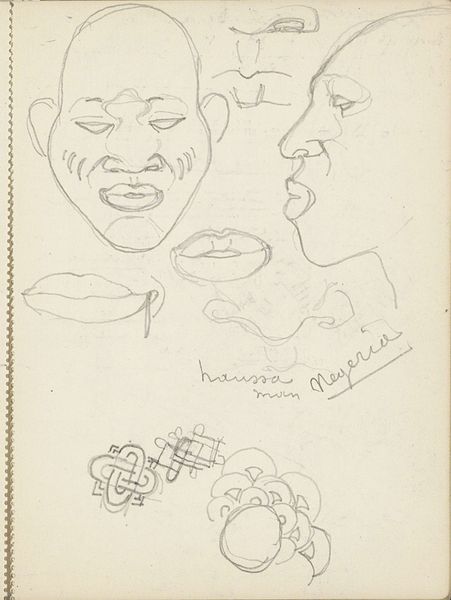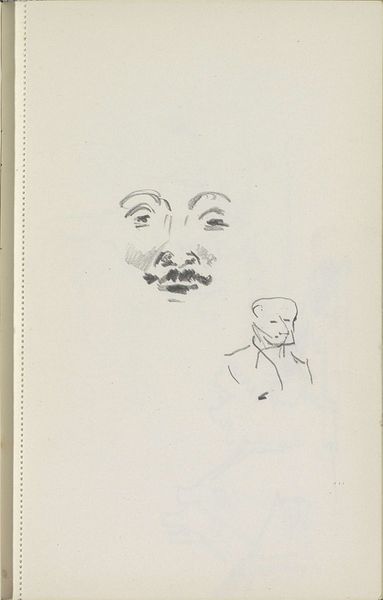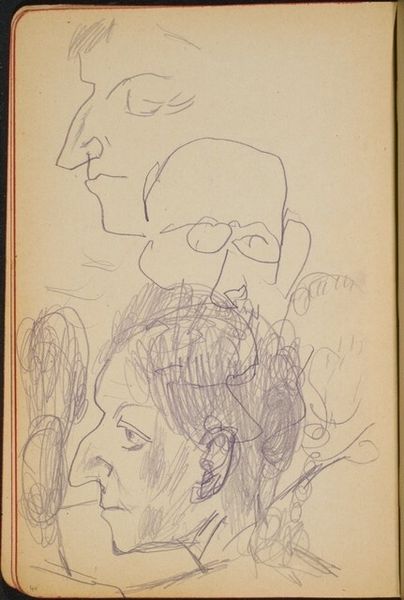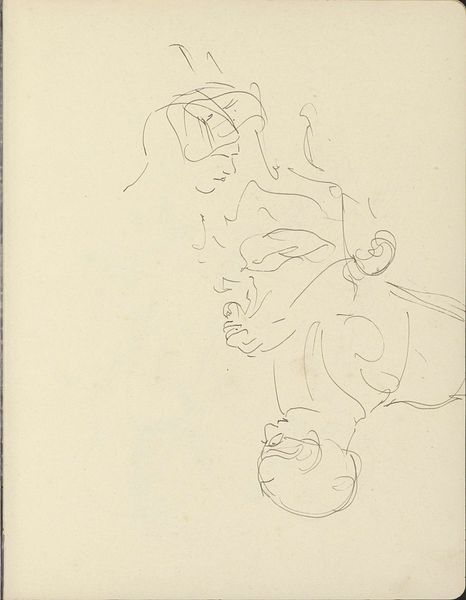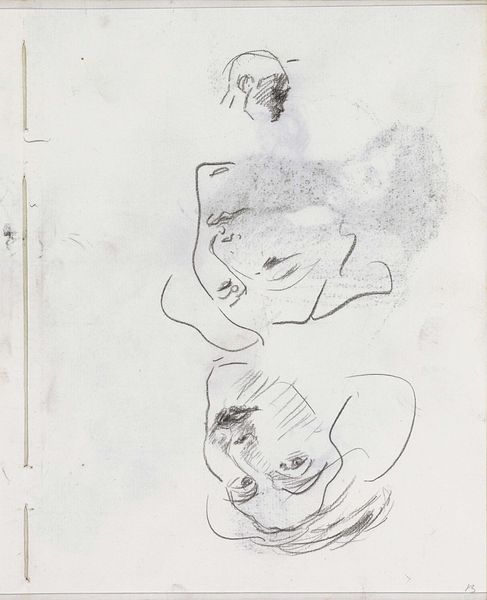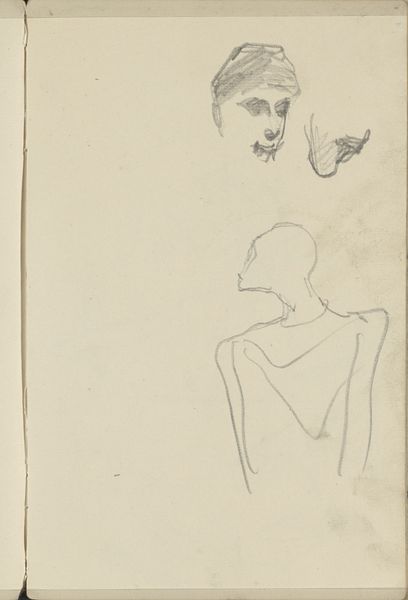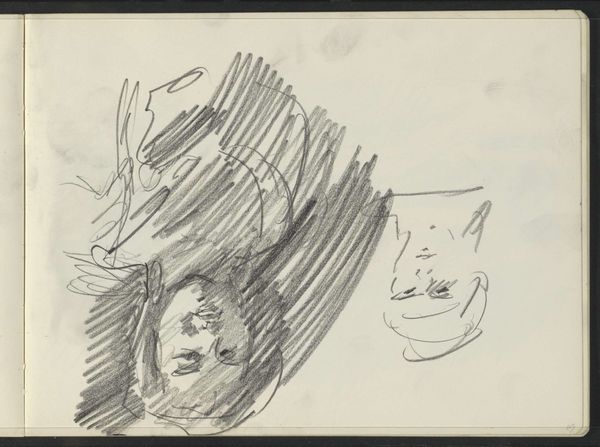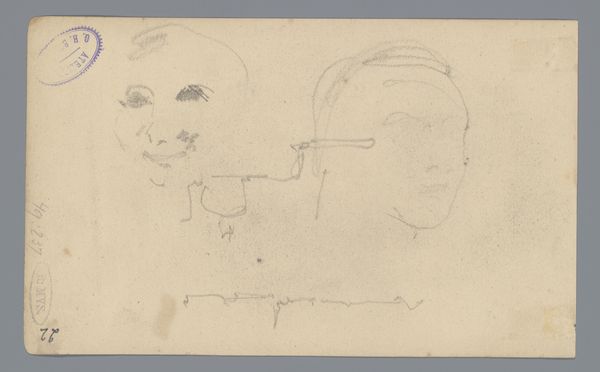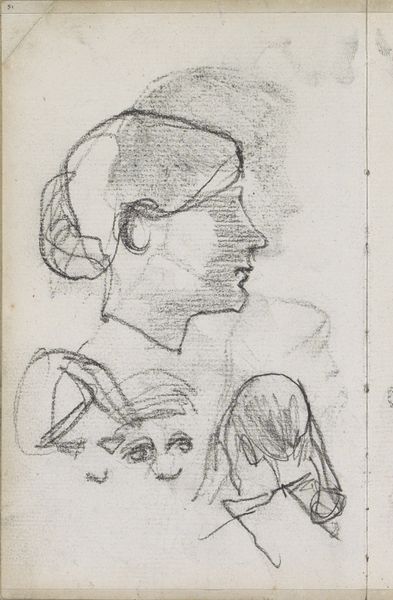
drawing, pencil
#
portrait
#
drawing
#
comic strip sketch
#
imaginative character sketch
#
light pencil work
#
old engraving style
#
cartoon sketch
#
personal sketchbook
#
idea generation sketch
#
ink drawing experimentation
#
pencil
#
sketchbook drawing
#
sketchbook art
#
realism
Copyright: Rijks Museum: Open Domain
Curator: This drawing, whose creation is dated somewhere between 1916 and 1945, is titled “Hoofden van een Afrikaanse man.” It resides here at the Rijksmuseum and appears to be made with pencil on paper. Editor: Wow, my first impression is…introspective. The eyes are closed, almost like he's turned inwards. It feels incredibly private, a glimpse into someone’s quiet moment. Curator: I think that is an important lens to adopt, and perhaps a perspective that was denied to those racialized during this time, because a work like this can easily be interpreted within a framework of colonialism. Whose gaze are we seeing? And what power dynamics are at play when a European artist sketches an African man? Editor: That’s a good point, and the roughness of the sketch also gives the impression that it may be preparatory studies or a private exploration, a moment of artistic processing of the gaze you mention. I do feel like the almost cartoonish features softens a lot of potential sharp, colonialist edges. What I see in the larger head is a search for something tender and even innocent. Curator: The rendering, with its rather unsure lines, seems less focused on capturing an external likeness, but seems like a reaching out towards some sort of inner state, and that uncertainty invites a wider conversation around representation. Given the context of the time, the portrayal, albeit in a rough sketch, avoids overtly stereotypical features. Yet the closed eyes could still be interpreted as a denial of agency. Editor: Exactly, it’s so ambiguous. I also get this odd feeling of incompleteness from it – the work feels less like a polished statement, and more like… a thought, a fleeting idea on paper. And I love that! Curator: Perhaps we, as viewers, can then reflect on that fleeting idea, interrogate our own biases and presumptions, and appreciate the complexities inherent in artistic representation across cultural boundaries. Editor: Absolutely, art doesn’t need to give us answers. I like how this raw little sketch asks the important questions in a simple, but complex way. It’s almost like catching someone in the middle of a thought.
Comments
No comments
Be the first to comment and join the conversation on the ultimate creative platform.

